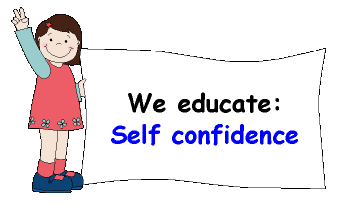|
The development of self confidence in 0 to 6 year olds depends fundamentally on the adult and his methods to educate the children. It is necessary to teach the child to have a suitable disposition to conduct actions with joy and security, to show himself as he is and to express what he feels and thinks, all this is very important so that he has confidence in himself. The educator must allow the child to express and exchange with him his experiences, to let him act spontaneously, to accept to make the task that is given to him with disposition and affability, in short, to establish an adapted relation with the child. Another important aspect to develop in the child is self confidence, it means to offer him the possibility of acting by himself, to reach a satisfactory result in the activity, for this when preparing the activities the educator will think as a starting point what the child can achieve, according to his real and potential development, what he needs to do, the achievements we want him to reach, and where he must reach given objectives raised in the program. To the point where the child is more independent if he finds the right solution for each task, he will have more confidence in himself. Another important subject is the adapted and fair evaluation that the adult does of the activities of the child, this is a determining factor in his emotional state and the attitude that he assumes before the different tasks that are entrusted to him and in the reliability in himself; since he always waits for this evaluation from the adult, who is his model and who guides him in the acquisition of knowledge; if we evaluate him unfairly or unsuitably, with methods that hurt him, he will lose confidence in himself. It is necessary to praise the child, to stimulate him when something comes out well, and if he does not do something correctly we tell him that today he did not do well, but if he continues working tomorrow it will come out better. |
ACTIVITY
No 1 |
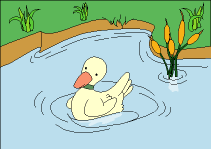 |
Summary of the activity: This activity will begin with a puppet theatre, then a conversation and finally the children will draw and model the little duck Monono. Objectives:
Procedures:
Material Resources: Puppet theatre and two stick or glove puppets: Pomponia and Monono. Cassette recorder.
Development of the activity:
2nd Part Did
you like the story? The answers of the children can be recorded to be listened later.
3rd Part |
CRITERIAL
ASSESSMENT |
|||
Observed
conduct |
YES |
NO |
Comments |
They
knew how to analyze critically the insecure conduct of the little duck
Monono. |
|||
They
needed help to analyze critically the insecure conduct of the little
duck. |
|||
They
related the story of Monono to their own experiences. |
|||
They
mentioned not to be like the little duck. |
|||
They
indicated the insecure conducts as no good. |
|||
ACTIVITY
No 2 |
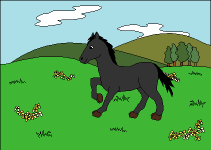 |
Summary of the activity: The activity will begin with the narration of a story, then, the educator together with the children will make a comparative analysis between the attitude of the little duck Monono of the previous story, and the one of the tiny Pony. Objectives: That the children learn to compare the benefits and damages of reliability and insecurity in themselves. Procedures:
Material Resources: Text of the story, series of pictures with scenes about the argument.
Development of the activity:
2nd Part Are the conducts of Monono and the Tiny pony similar in any way? We are going to talk on this. The children guided by the educator will make a comparative analysis between the attitude of both characters and will emphasize some passages of the story of the tiny pony to be commented:
|
CRITERIAL
ASSESSMENT |
|||
Observed
conduct |
YES |
NO |
Comments |
They
knew how to analyze the damages of the insecure conduct of Monono. |
|||
They
needed help to analyze the damages of the insecure conduct of Monono. |
|||
They
knew how to analyze the benefits of the sure conduct of the Tiny pony. |
|||
They
needed help to analyze the benefits of the sure conduct of the Tiny
pony. |
|||
They
knew how to compare the conduct of both characters. |
|||
They needed help to compare the conduct of both characters. |
|||
ACTIVITY
No 3 |
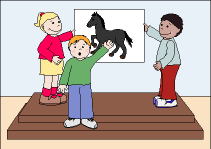 |
Summary of the activity: This is a recital made by the children in tribute to the tiny pony. The children will sing and recite poems and songs dedicated to the tiny pony, and finally they will talk about his qualities. Objectives:
Procedures:
Material Resources: Poems and songs with content related to the subject matter.
Development of the activity: 2nd
Part |
CRITERIAL
ASSESSMENT |
|||
Observed
conduct |
YES |
NO |
Comments |
The
showed positive emotions during the recitation. |
|||
They
expressed positive comments about having confidence in themselves.
|
|||
They managed to recite verses with appropriate intonation and rhythm. |
|||
They
made manifestations of rejections towards insecure conducts. |
|||
They
seemed to trust their own strengths. |
|||
ACTIVITY
No 4 |
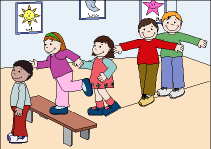 |
Summary of the activity: This is a movement game. In the first part of the activity the teacher explains to the children what the game "I can" consists of and its rules, in the second part the children will play the game and finally the winners will award themselves Objectives:
Procedures:
Material Resources: A bench of some height (50 cm. approximately) and a rope of 3 meters in length.
Development of the activity: Organization
of the game: In front of each team a stretched rope of approximately 3 meters in length will be placed. And at the end there will be a bench of approximately 50 cm. of height. Development: Rules: If any child could not do the circuit, the educator will help him so that all feel able to do it. |
CRITERIAL
ASSESSMENT |
|||
Observed
conduct |
YES |
NO |
Comments |
They
did the movements well. |
|||
They
needed help to make the movements. |
|||
They
showed an assertive behaviour when making the movements. |
|||
They
expressed favourably on the individual and group benefit. |
|||
ACTIVITY
No 5 |
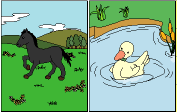 |
Summary of the activity: This is a game of riddles called "Guess the character". Objectives: To reaffirm the knowledge that the children have on sure and insecure conducts. Procedures:
Material Resources: Cards with the description of the characters.
Development of the activity: The educator will make the following descriptions:
Once the children guess the characters, which is going to be very easy, the educator initiates a conversation on the positive and negative differences of each character, about the quality that we are working: confidence in ourselves. |
CRITERIAL
ASSESSMENT |
|||
Observed
conduct |
YES |
NO |
Comments |
They
guessed the character quickly and in an independent way. |
|||
They
needed help to guess the character. |
|||
They
could contrast a character with another one. |
|||
They
indicated differences in the characters and they related them to the
confidence in themselves. |
|||
ACTIVITY
No 6 |
 |
Summary of the activity: It consists of asking the children a series of questions, within a conversation on the subject, to verify if they behave confidently or not. Objectives: To verify if the children show themselves insecure or sure in their actions. Procedures:
Material Resources: Texts with the questions, cassette recorder.
Development of the activity: When
you want to do something that is very difficult do you prefer not
to do it? Why? The opinions of the children can be recorded and listened to again before reaching conclusions, as well as to keep them after the activity, to listen to them later. |
CRITERIAL
ASSESSMENT |
|||
Observed
conduct |
YES |
NO |
Comments |
They
have enriched the notions on self confidence that they had at the
beginning of the activities of this block. |
|||
They
have only acquired some notions on secure or insecure conduct. |
|||
Their
answers show that they are sure of themselves. |
|||
Their
answers show that they are insecure. |
|||
They
knew how to discuss their answers. |
|||
They needed help to discuss their answers. |
|||


